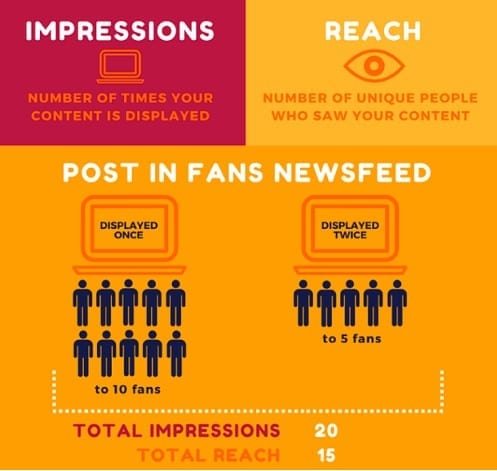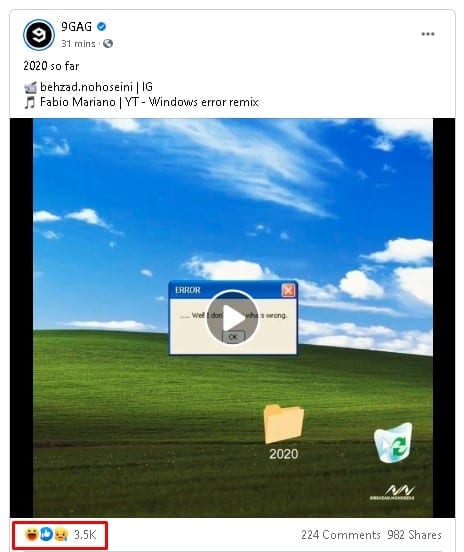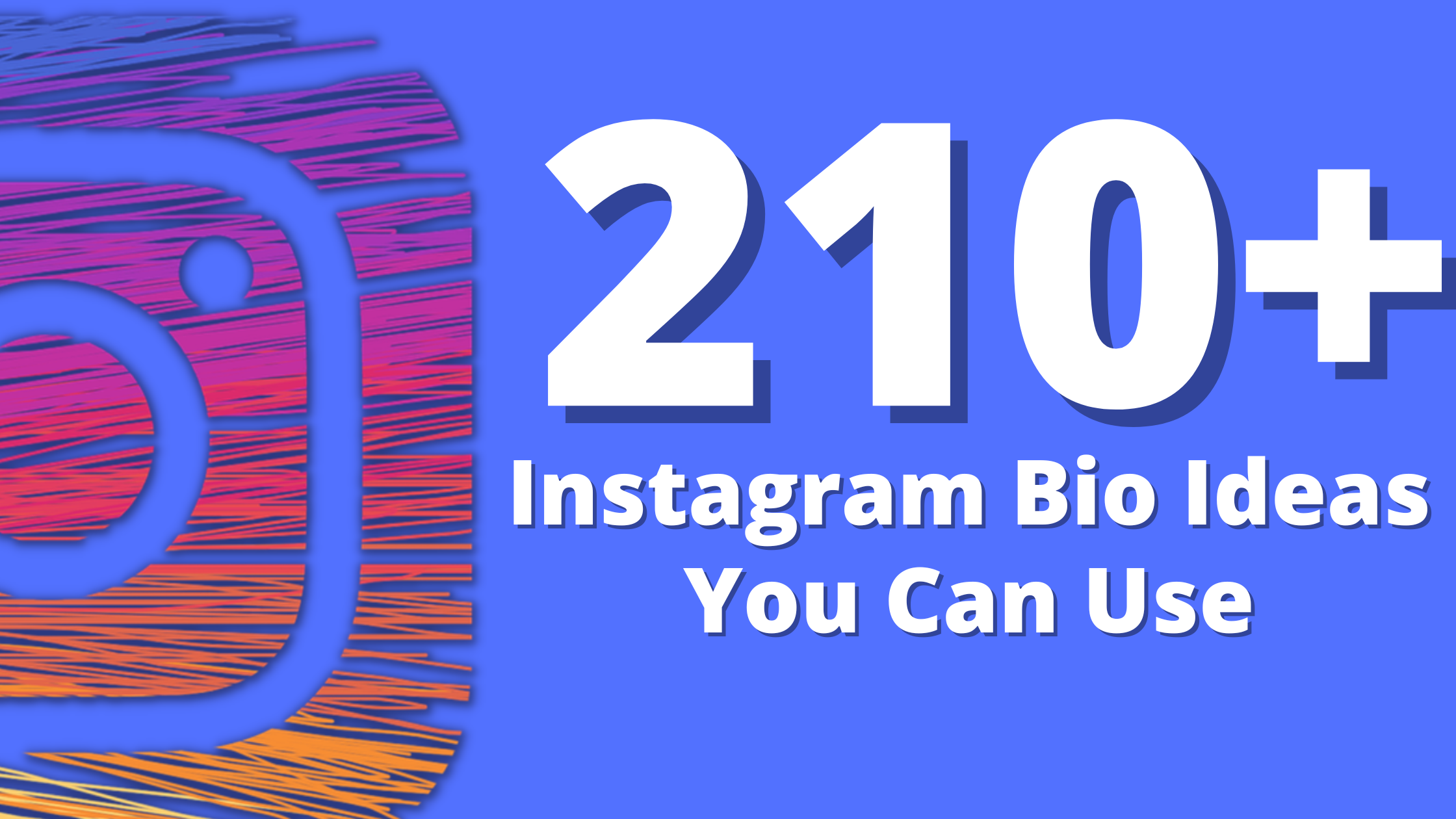Reach vs Impressions – Its Importance In Digital Marketing
Digital marketing is about more than pulling together some clever slogans and interesting images. There is a lot that goes on behind the scenes that impacts and reflects your marketing strategy and its success. That is why it’s important to know more about reach vs impressions. The numbers linked to this data will show you how many people are seeing your content.
However, reach and impressions have different meanings and show different results. It is thus important that you know what the difference is between them.
The discussion around impressions and reach can be convoluted and confuse you but put on your thinking cap and you’ll be just fine!
Reach vs. Impressions – The Difference
The main difference between reach vs impressions is that reach is the overall number of people who see your content and impressions are the number of times that your content was displayed, regardless of whether it was clicked on or not.
Still confused? We don’t blame you. But bear with us here…
Reach is when someone has definitely been exposed to your content. An impression is when it has been delivered to someone’s feed but doesn’t take into account whether or not they interacted with it.
One person could also have many impressions for one piece of content. A Facebook post could, for example, show up in the News Feed once shared by the original owner.
Then, it could show up in your feed when a friend has shared it – this means you saw it twice and both times count as separate impressions.
Ideally, you would want your content to be seen by all of your followers. Sadly, that is not a realistic expectation.
Not all of your brand’s followers will get to lay eyes on all of your posts. As an example, a popular company with millions of followers might only get a fraction of them to see their content.
The social media world is very competitive and busy, and this is why your impressions and reach stats are not always as high as we would like them to be.

A More In-Depth Discussion Of Reach vs Impressions
There certainly are some similarities between reach and impressions but there is also more to it. It differs especially when it comes to engagement.
Here’s an example of how these two are different:
You could share an interesting tweet on your account with 100 followers. If every single one of your followers saw that tweet, you will have a reach of 100 users. Along with that, you will have 100 impressions.
The next day, you share another tweet or two. Your reach is still 100 but your impressions will now be 200. That’s because your 100 followers saw your two tweets.
The people you reach can be affected by the engagement of your followers. If some of them like or comment on your content, it will show up on some of their friends’ feeds as well.
That means that not all the reach you get is from your own following. This, of course, is a good thing because it boosts your brand awareness.
Not everyone who sees this content will want to interact with it though. That’s why impressions will normally be much higher than your reach.
The concept of impressions and is rather complicated and a bit challenging but very important. It will help you track the success of a social media campaign much more accurately.
Try to remember it this way: reach is the number of people who saw your content and impressions ar the total amount of times your content was shown to social media users.
The different kinds of social media platforms also have their own kinds of reach vs impressions metrics, so they’re making things a little bit more complicated!
Facebook is especially different when compared to other platforms. For example, Facebook can show you data about your performance by post type as well as other categories.
So, to become a social media superstar, you have to learn more about how Facebook works with reach vs impressions.
It is important that you do not get blinded by the number of followers that your pages have.
Only a small number of them will see and engage with your content. The reach you get is vitally important. The number of people you were able to reach out to is what matters, more even than the number of followers you have.

Reach vs Impressions And Your Marketing Strategies
When planning your marketing strategy, it is important to look beyond what these terms mean in definition. You should focus on what they mean for your strategies.
Let’s take a look at how you can do that.
Know Your Audience
For companies, it is important to be noticed by as many new clients or consumers as possible. As your reach goes up, so does your awareness.
However, keep in mind that even if you get to 10 000 people, it means nothing if only 1 000 of them are interested in what you have to offer.
That’s why it is important to reach the right people – your people. Create your marketing strategy with your specific audience in mind.
We suggest that you also keep an eye on what content is being liked, replied to, retweeted and shared. If you track this, you’ll easier find more potential users that you can target, which increases your reach.
Keep A Close Eye On Your Engagement Metrics
You need to stay on top of what is happening with your content and your metrics is how you do that. Of course, depending on the platforms you use, your metrics may vary from one to the next.
If you monitor and analyse your metrics, you will see how your strategy is doing in regards to reach vis impressions.
The Role Of Reach vs Impressions In Marketing Strategies
Let’s discuss how you can use what you’ve just learnt about impressions and reach in your marketing strategy.
Reach
You can use reach to make the most of your paid ad campaigns. If your reach is high, it is likely that you are creating content that is appreciated by your audience. That means they are more likely to engage with your content.
Targeting them with paid campaigns will pay off much better if that is the case.
However, keep in mind that your conversions must be good too, or reach won’t mean much. If you’ve noticed a low conversion rate, you should take a look at your strategy. Something will need to be adjusted.
Impressions
These are useful if you’re curious (and a little bit hasty) to see how effective an ad is. Impressions change from one moment to the next so you’ll have to track how it performs immediately after your ad was published.
If you find that your ad did not get any impressions, you may have to go back to the drawing board. Make the necessary edits and publish it again.
We suggest that you track both reach and impressions together. This will give you a much clearer idea of how successful your marketing strategies are.
Benefit Of Tracking Both
By now you may be wondering exactly why you should be so concerned with these two terms, especially since they can seem like the same thing.
Here’s why.
It is often necessary for social media users to see an ad more than once before they will show interest. That is why you need to keep an eye on reach as well as impressions. Your impression will always be higher, as it should be.
You want impressions to be higher because that means people are seeing your content more than once, which might get them to react.
Establish Effectiveness Of Ads
If you are getting many impressions but not a lot of reach, you should consider that your ad is not as effective as you’d like it to be.
This could be due to ad fatigue and the same people are seeing your ad over and over. It might be time to rethink your ad and change it to be more interesting.
Measure Brand Awareness
Brand awareness is crucial for the success of your brand. You want people to know who you are so they’ll prefer you over the competition. With the help of your reach and impressions, you can see if your audience is familiar with you.
With high reach and impressions, it is clear that you are reaching interested people many times. This will improve the likeliness of quality leads being generated.
Going Beyond Reach and Impressions
As a digital marketer, you will know that keeping track of all your available data is important. While you should monitor reach vs impressions, you should also monitor other metrics to make the most of your strategies.
Keep tabs of your engagement and your return on income. These are vitally important metrics that will let you know if you’re failing at your goals.
Conversions are also super important, they have a real impact on your company.
What you want is a good balance of all these metrics.
You want good reach and impressions as well as ROI and engagement. You need conversions to increase sales.
Expand Reach And Impressions
There are several strategies you can make use of to increase your reach vs impressions performance. We’ll explore two of the most popular strategies to give you some ideas on what to do.
Social Media Marketing
You can easily monitor your reach and impressions when you make use of social media to market your brand.
You can see how your content travels and performs on the various platforms.
Also, it is possible to keep track of this data with the paid ad options. It will be possible to see how many new leads have clicked on your ads compared to how many times people have seen them.
If you have questions, take a look at our Social Media Marketing guide for 2020.
Pay-Per-Click Advertising
If you go with a PPC (pay-per-click) campaign, you will be able to help people connect with you online. The ads appear at the top of search results, above all the organic listings.
With this kind of campaign, you can monitor the reach vs impressions of your ad. You will also get more quality leads because people are searching for your keywords and seeing your ad.
If 1 000 people see your ad, your reach is 1 000 and if the ad is displayed 10 000 times, you have 10 000 impressions.
There are some software options that will help you to create and manage your PPC campaigns more professionally. For example, you can use PPC management software like Adplorer and optimize your PPC advertising by saving lots of resources.
Create Content That Is Shareable
You can monitor reach vs impressions in content marketing as well. Share your content on social media and look at the results after a specific time.
You have to create content that is exciting and interesting or no one is going to share it, which is why you create it. The more people share your content, the more your brand awareness increases.
Your reach and impressions will also improve.
Appeal to your audience, create content they want to engage with. This is why it is so important to really know your audience. Want them to share your content? Give them a reason to do so.
When you create the right content, you will improve your reach and that will improve your impressions. It’s a beautiful cycle that gets started with engaging content.
Now, let’s look a little closer at how the most popular social media platforms will give insight into your reach vs impressions.
Social Media Metrics And Reach vs Impression
To have a better understanding of reach and impression, it is a good idea to look at how the most-used platforms define and calculates it. Let’s get into it, shall we?
When you check out the analytics of your tweets, you will be able to see engagements and impressions. Reach isn’t that readily available to view though. That’s because Twitter doesn’t actually track reach.
To get an idea of your reach, you will have to use a third-party tool to determine this specific data.
When you do make use of a tool to track your reach, it will show you the size of the audience that you have managed to reach.
Twitter impressions will show you exactly how many times your content has shown up on other users’ feeds and search results.
However, impressions that happened because of a website embed or text preview will not show up here.

According to Facebook, reach is the number of people who saw your ads at least once. However, they add that it is hard to quantify this data exactly.
Impressions may include multiple views of ads by the same people.
Just remember that this data does not show engagement. You can’t be sure if someone clicked on your ad or just scrolled by after seeing it. Facebook goes the extra mile to help you measure your metrics by breaking it down in groups.
There are three categories – paid, organic and viral. We’ll take a look at how each of them works.
Paid
Paid reach and impressions are what you get from your paid campaigns such as Facebook Ads. Facebook counts video ads impressions the same way it counts impressions of image ads.
This means a video doesn’t have to be watched to be counted as an impression.
To determine the real impact of your ads, the paid data can be further classified into served and viewed.
Served reach and impressions on Facebook are related to the system’s registration of the delivery of an advertisement.
It means that the system doesn’t care if users saw the ad, only that it was showed (served) somewhere.
The problem here is the system does not care where the ad was placed so it might not reach your target audience.
Also, if a user left a page while the ad is still loading without seeing it, the system still counts it as an impression. Served impressions aren’t as accurate in measuring impact.
On the other hand, viewed impressions are only counted when a user has seen the ad shown to them. They are thus much better for calculating the effectiveness of your ads.
Organic
As you may guess, organic reach the number of unique Facebook users your content reaches without any campaigns to push them.
Viral
Having posts go ‘viral’ is sought-after for companies. That’s when your post or ad goes beyond reaching your audience and followers. This allows your content to reach a lot more people and increase your reach.
Very much the same as with Facebook, Instagram sees reach as the number of unique accounts that saw your post. Impressions are the number of times your content was displayed on Instagram.
With an Instagram business profile, you will be able to easily access your accounts’ metrics.
You will be able to see reach, impressions and the percentage of Instagram users that aren’t following you but were reached.
Your impressions are also broken down into data that you can easily understand. It is possible for you to see your weekly impressions and reach.
Instagram Stories don’t have that kind of break down of data though.
Instead, you’ll see how people interacted with your story, whether they navigated back or forward or exited after seeing the post.
When you look at those numbers, you should be able to get an idea of why your impressions are higher than your reach.
Reach vs. Impressions on Other Platforms
In case you are curious about the way reach vs impressions is considered by other platforms, we will briefly go over them.
Snapchat
This popular app has the same concept of reach and impressions as Facebook but named impressions ‘story views’ instead. You will be able to track and monitor your metrics in the same way as with other platforms.
Google Ads
Google sees a difference between cookie-based reach and unique reach here. Unique reach is the number of people who were shown your ad across different networks and devices. This reach can include average impression per user as well as unique users.
Cookie-based reach is based on (you guessed it) cookies which are calculated by taking note of the cookies that were recorded on an ad click. Because users can have more than one device, cookies can include duplicate views.
Google Analytics
Here, you are shown page views, as well as users, and these users are the same as reach. The number of people who have visited your site during a specific time is calculated. Pageviews show the number of views of your page from all visitors in total.
YouTube
The video-streaming site gives users insight into four different metrics related to reach. There are unique viewers which are similar to reach and it shows the number of people who watched your content.
Then there are traffic sources that are for impressions and indicate where on your thumbnails were shown on the platform.
Impressions show the number of times that your thumbnails have been shown to viewers on the site.
And finally, impressions click-through rate (CTR) indicate conversions. This is how often YouTubers watched your content after being exposed to your thumbnails.
Reach vs Impressions – The Bigger Picture
It can be a little confusing to learn the difference between the two terms but once you get the hang of it, you should be able to remember what they mean.
Once you have been able to distinguish between the two metrics, you will know how they are related to your social media marketing advertising strategy.
And, once you have this knowledge in your head, you can work on one of a marketer’s main goals – engagement.
If you feel that you need more information on getting engagement and nailing your marketing hopes, check out our SocialPlanner blog.
We share a wealth of info with our readers – from a Blog 101 guide to influencer marketing discussions and what a shadowban is and how to deal with it.
Conclusion
Now you know more about reach vs impressions and should be able to make the most of your new know-how. All you need now is to build a clever marketing strategy around this knowledge.
Keep in mind that it is important that you always know your audience, regardless of your strategy or what you know about reach, impressions and their role in digital marketing.
When you do, you will be able to use any other info you have more effectively.




